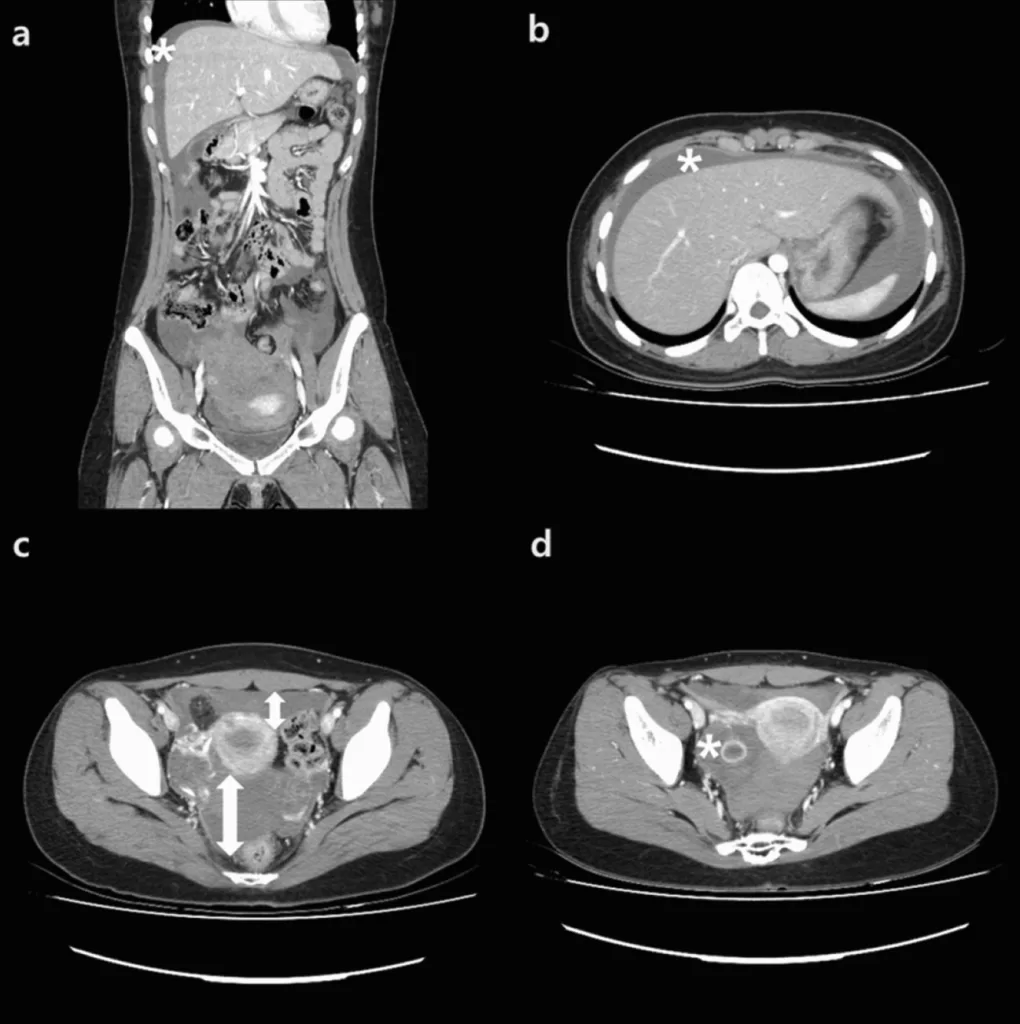What is an ovarian cyst? Females have a pair of ovaries whose size and shape are like that of an almond located on each side of the uterus. An ovarian cyst is a growth-like sac or pocket that may be solid or fluid-filled and may develop within/on the surface of the ovary. Most ovarian cysts are harmless and may go away on their own with no treatment needed but there are some that rupture leading to a serious problem. Ovarian cyst form as a result of the menstrual cycle.
Types.
- Functional cysts- each month a follicle develops in the ovaries and it’s responsible for releasing the ova when a female ovulates. Functional cyst occurs when the follicles continue to increase in size and they are of two types:
- Corpus luteum cysts result from fluid buildup in the follicle when the ova opening gets blocked.
- Follicular cyst- occurs when the follicles don’t rupture but continue to grow.
- Cystadenoma- develops from the cells on the surface of the ovary.
- Dermoid cyst- which is also known as a teratoma. Cyst is formed from the reproductive cells that male the eggs.
- Endometrioma cyst – occurs when the tissues from the outside of the uterus attach to the ovary and grow to form a cyst.
Symptoms of ovarian cyst.
- Stomach bloating.
- Pain on the pelvis.
- Menstrual irregularities.
- Pain during sexual intercourse.
Risk factors of ovarian cyst
Ovarian cyst risks are higher if one has:
- Hormonal problems.
- Pregnancy.
- Endometriosis.
- Severe pelvic infection when it spreads to the ovaries.
- Recurrent ovarian cysts.
Complications.
- Ovarian torsion where large cysts force the ovary to move thus causing a reduction in blood flow to the ovary.
- Rupture of the cysts causes severe pain and bleeding inside the pelvis. Larger cysts have a higher risk of rupturing when one engages in vigorous activities e.g. vaginal sex.
- Cancerous cysts.
Diagnosis of ovarian cyst

- Pregnancy test where a positive test for someone who is not sexually active may suggest a corpus luteum cyst.
- Pelvic ultrasound- helps to determine the location, size, and appearance and also to confirm the presence of a cyst.
- Pelvic examination.
- Use of a laparoscopy.
- Tumor markers tests e.g. CA125 (cancer antigen 125) whose levels may be elevated in non-cancerous conditions like pelvic inflammatory disease.
Treatment.
- Use of medication like hormonal contraceptives.
- Surgery- when the cysts are too large and painful they can be removed through surgery.
- Palliative care is where the doctor keeps examining the cysts while observing their progress for a period of time.
- Bay head elementary school history, enrolment, programs offered.
- List of Accredited Private Universities in Kenya
- A list of special secondary schools, and contacts.
- Best Public High Schools in Kiambu County.
- Kenya Institute of special education, courses.
- List of Best private secondary schools in Nairobi County.
- Egerton university, fees, location, courses.